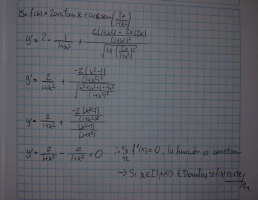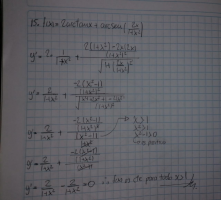I know x real number
I need to find "x" values such that:
2arctan(x) + arcsin(2x/(1+x^2))=pi
A. (0,infinity)
B. (-infinity,-1)U[1, infinity)
C. [1, infinity) right answer
D. [-1,1]
E. [2,infinity)
I tried everything I know.
I found only x=1
I need some ideas,suggestions..
I need to find "x" values such that:
2arctan(x) + arcsin(2x/(1+x^2))=pi
A. (0,infinity)
B. (-infinity,-1)U[1, infinity)
C. [1, infinity) right answer
D. [-1,1]
E. [2,infinity)
I tried everything I know.
I found only x=1
I need some ideas,suggestions..






